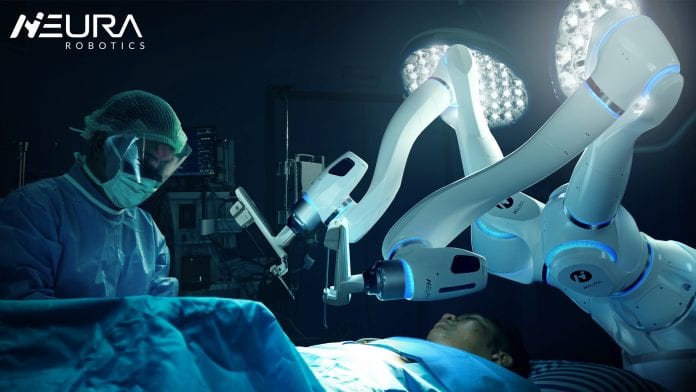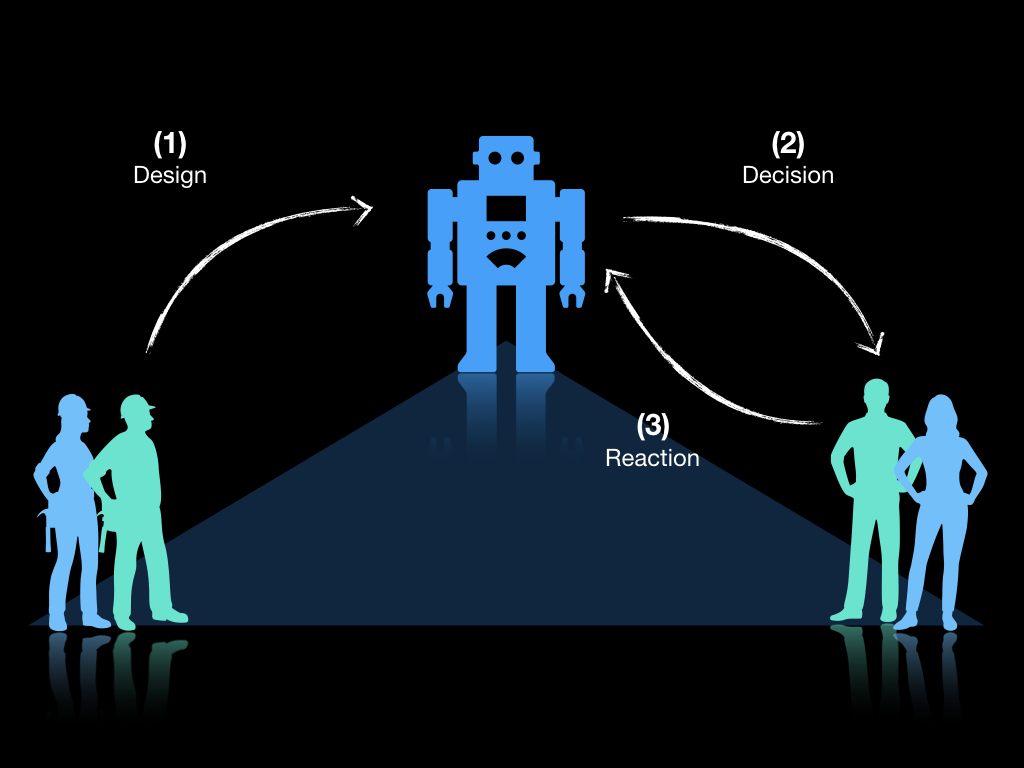INTRODUCTION
A robot is a mechanical device created by humans to carry out human tasks and activities autonomously, semi-autonomously, or automatically. They can also be virtual, they are created to interact with their environment and can be equipped with sensors, actuators, and control systems to perceive and manipulate objects. They are human imitators to some degree, with emphasis on “to some degree” because there’s a limit to what a robot can do based on their intelligence. With the evolution that comes with time, this might be achievable. They exhibit a type of intelligence popularly termed AI (Artificial Intelligence), which is displayed in different forms and levels. A robot can be used for various purposes, such as customer care chatbots, industrial automation, healthcare assistance, harvesting in agriculture, entertainment, etc. There are various kinds of robots, ranging from the simple ones that carry out simple activities to the ones programmed with AI, e.g., humanoids, UAVs (unmanned aerial vehicles) or drones, AMR (autonomous mobile robots), [hybrids](en.wikipedia.org/wiki/Hybrot#:~:text=A%20hy.., cobots, aka collaborative robots that work with humans, and many more.
COMPONENTS OF ROBOTS
SENSORS
This is a device or an inbuilt feature of the robot that creates awareness of its condition and its surroundings. Just like nerves are to men, so are sensors to robots. There are various sensors used in robots, and these are some, of them:
i. Light sensors:
Light sensors are employed to detect light and produce a variation in voltage. Robots utilize two types of light sensors: photovoltaic cells and photoresistors They are very important in measuring the amount of light the robot can take and cannot take.
ii. Sound Sensor: The primary function of a sound sensor is to identify and convert sound into an electrical signal. That’s why a robot can move towards a finger snap or detect a humming sound.
iii. Temperature Sensor: A temperature sensor is utilised to perceive variations in temperature in its environment. This sensor operates on the principle of detecting changes in voltage difference caused by temperature changes, allowing it to generate an accurate temperature reading of the surroundings. E.g LM34, TMP37 and TMP35
iv. Contact Sensor: The contact sensor, commonly referred to as a touch sensor in robotics, serves the purpose of detecting alterations in velocity, position, acceleration, torque, or force at the joints of the manipulator and the end-effector.
v. Proximity Sensor:
A proximity sensor in a robot is used to detect objects near the robot and also measures the distance from the robot to some objects without any physical contact, but they use magnetic fields to sense such objects.
ACTUATORS
An actuator is a component within a device or machine that facilitates physical motion by transforming energy, typically electrical, pneumatic, or hydraulic, into mechanical force. In simpler terms, it is the element responsible for enabling movement in any given machine. There are mainly two types of actuators, linear and rotary. The table below shows an example of how they operate via their power sources, which include pneumatic, hydraulic, and mechanical sources.
THE FUNCTIONS OF BOTH LINEAR AND ROTARY ACTUATORS
Motion Type: Linear actuators generate motion in a straight line, while rotary actuators produce circular or rotational motion.
Applications: Linear actuators are commonly utilized in applications that require linear movements, such as adjustable furniture, robotics, and automation systems. Conversely, rotary actuators find use in scenarios that involve rotational motion, including robotic arms, conveyors, and industrial processes.
Design: Linear actuators typically have an elongated shape and extend and retract in a straight line. On the other hand, rotary actuators are compact and designed to rotate around an axis.
Force and Torque: Linear actuators excel at providing high force and load capacities, making them suitable for heavy-duty applications. Conversely, rotary actuators offer high torque output, enabling them to rotate heavy loads.
Mounting Options: Linear actuators can be mounted in different orientations, such as vertically or horizontally, depending on the specific application requirements. Rotary actuators offer versatility in terms of mounting options, allowing for easy integration into various systems.
ROBOT CONTROL SYSTEMS
Algorithms and programming play a crucial role in enabling robots to perform tasks and interact with their environment. Essentially, algorithms are step-by-step instructions or procedures that guide a robot on how to accomplish a particular task. These algorithms are created by humans and implemented through programming.
Programming a robot involves writing code that instructs the robot on what actions to take based on different situations. This code typically follows a specific programming language, such as Python or C++. The code contains commands and logic that tell the robot how to process sensor data, make decisions, and control its actuators.
For example, if a robot needs to navigate a room, the algorithm might involve steps like "detect obstacles," "determine the best path," and "move forward." The corresponding programming code would use sensors to detect obstacles, analyze the data, calculate the optimal path, and send commands to the robot's motors to move accordingly.
Robots can use various algorithms, such as path planning algorithms to find optimal routes, machine learning algorithms to recognize objects, or control algorithms to maintain stability and precision. The choice of algorithm depends on the robot's capabilities and the task at hand.
In summary, algorithms, and programming provide the instructions and logic necessary for robots to execute tasks by processing sensor data, making decisions, and controlling their actuators.
ROBOT PERCEPTION AND INTERACTION
Robot perception and interaction involve the way robots perceive and understand their environment and interact with it. These capabilities are essential for robots to operate effectively and engage with humans and other objects in a meaningful way.
Perception in robots involves gathering information about the surrounding world using various sensors. These sensors can include cameras, depth sensors, LiDAR, microphones, touch sensors, and more. Cameras provide visual information, depth sensors help in understanding distances, microphones capture sound, and touch sensors detect physical contact. By integrating data from these sensors, robots can build a representation of their environment.
Interpreting the collected sensory data requires processing and analysis. Computer vision algorithms can be employed to recognize objects, people, and gestures from camera images. Natural language processing techniques enable robots to understand and respond to human speech. Machine learning algorithms can be used to identify patterns, learn from data, and make predictions.
Interaction involves the ability of robots to engage with the environment and interact with humans or objects. This can include tasks such as grasping and manipulating objects, navigation, speech synthesis and recognition, facial expression recognition, and more. Robots can use actuators like robotic arms, grippers, wheels, or even humanoid body structures to perform physical interactions.
Human-robot interaction focuses on creating intuitive and user-friendly interfaces for people to interact with robots. This can involve voice commands, touchscreens, gestures, or even natural language conversation. By understanding human intentions and responding appropriately, robots can collaborate with humans in various scenarios.
In summary, robot perception and interaction encompass the use of sensors to perceive the environment, the processing and analysis of sensory data to make sense of it, and the ability to interact physically or verbally with humans and objects. These capabilities enable robots to understand their surroundings and engage in meaningful interactions, facilitating their integration into various domains such as healthcare, manufacturing, and personal assistance.
APPLICATION AND FUTURE OF ROBOTS
A. Application of Robots currently
Robots in manufacturing: Robots are widely used in factories to perform tasks like putting things together, welding, packaging, and checking quality. They help make production faster, more efficient, and less expensive.
Robots in healthcare: Robots play an important role in healthcare. They assist doctors in surgeries, help patients with rehabilitation, and care for the elderly. Surgical robots make operations less invasive, improving precision and reducing patient discomfort. Robotic exoskeletons help people with physical therapy and movement support.
Robots in exploration: Robots are used in exploration missions, such as space and deep-sea exploration, as well as mining. They can withstand extreme environments and collect information from unknown places, expanding our knowledge and possibilities.
B. New trends and challenges
- Advances in self-driving vehicles: Self-driving cars and drones are becoming more common. Autonomous vehicles have the potential to transform transportation by making it safer, reducing traffic congestion, and saving energy.

- Human-like robots: Robots that look and act like humans are being developed. These robots have advanced artificial intelligence and can perform complex tasks and interact with people more naturally. They are used in customer service, education, and entertainment, and they can even be companions or caregivers for older adults.

- Ethics and the impact on society: As robotics technology advances, we need to consider ethical questions. This includes concerns about people losing their jobs due to automation, privacy issues, and how robotics affects social relationships. It is important to develop and use robots responsibly to address these challenges.

- Robotics in healthcare: Using robots in healthcare raises ethical questions about patient privacy, data security, and the boundaries between human care and machine intervention. We need to establish rules and regulations to address these concerns. Here is an example:

- Changes in the job market: The increasing use of robots and automation in different industries may lead to job losses and significant changes in the job market. It will be important to provide training and education programs to help people adapt to these changes.

Bias and fairness: Robots powered by artificial intelligence can unknowingly perpetuate biases present in their training data, which can result in unfair outcomes. We must ensure that robots make fair and unbiased decisions to avoid worsening existing social inequalities.

In summary, robots are already widely used in manufacturing, healthcare, and exploration. The emergence of self-driving vehicles and human-like robots shows the exciting future potential of robotics. However, we must address ethical concerns, consider the impact on society, and overcome challenges to ensure responsible development and use of these technologies. By doing so, we can fully unlock the benefits of robotics for the betterment of society.
CONCLUSION
In conclusion, robots are the future, it was once a figment of our imagination, but with our affiliation to technology and the evolution of beliefs and inventions, robots are becoming or have become associates and are the only imaginable devices that can help bring our technical imaginations to reality. Understanding how robots work is important because it helps us recognize what they can do and how they can be used. Robots are complex machines that combine technology, programming, and artificial intelligence. They have different parts, like sensors and actuators, and they use control systems to make decisions.
The field of robotics is advancing quickly, bringing both exciting opportunities and challenges. We can see the growth of self-driving cars, robots that work with humans, and advanced humanoid machines. It's crucial to think about the ethical and social impact of these advancements. We need to develop and use robots responsibly to ensure they benefit society.
If you're interested in learning more about robotics, there are many resources available, such as books, online courses, and research papers. Stay updated on the latest trends and take part in discussions about the future of robotics. By exploring this fascinating field, we can shape a world where robots empower us and contribute to our well-being. Examples of links you can check for more study are:
